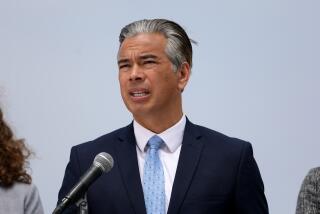Exxon’s ‘Cleanup’ Unleashes More Poisons
The underbudgeted and understaffed Alaska Department of Environmental Conservation has succumbed to pressure by Exxon and given the go-ahead for a large-scale untested program to incinerate the oil wastes from the 11-million-gallon spill last March. Considering that the oil industry provides Alaska with more than 80% of its revenues and its legislators with huge contributions annually, the responsiveness of the agency to Exxon is not surprising.
Cleanup of the spill has already generated a wide range of semi-solid wastes, estimated at 40,000 tons by Exxon and substantially more by the state agency. These wastes consist of about 40% carcinogen-laden weathered crude oil, 40% oil-impregnated plastic absorbent materials, and gravel, logs and dead animals, all soaked with up to 20% seawater. Exxon has so far disposed of about 2,000 tons of oil wastes by open burning on beaches and in inefficient, low-temperature municipal incinerators. Samples of ash from these incinerators have been classified as hazardous wastes.
With the rapidly approaching winter deadline for the announced “phase-down” of its cleanup, Exxon is charging ahead with a 3-month “solid-waste scooping program.” Exxon plans to dispose of the remaining wastes as quickly and cheaply as possible in three mobile barge-mounted incinerators at a rate of up to 650 tons daily. One of these, located in Prince William Sound, was designed for wood wastes and is unlikely to meet even minimal requirements for nontoxic emissions; the other two are untested rotary kilns, located in Prince William Sound and Kodiak Island.
Incineration is planned in the absence of independent observers and any experience in handling seawater-soaked oil wastes. Incinerator emissions will be monitored for conventional pollutants, such as carbon monoxide and nitrogen oxides, with only perfunctory monitoring for toxic organic chemicals and heavy metals. Exxon plans to bury thousands of tons of residual ash from the barge incinerators in an unlined municipal landfill in Valdez.
Exxon’s incineration program poses a grave threat to the public health and environment of Alaskans. There is ample evidence that the high concentrations of seawater chlorine in the oil wastes will combine with hot incinerator gases to produce a complex family of highly toxic and carcinogenic chlorinated air pollutants, particularly the ultrahazardous dioxin. Such chlorination occurs even in specialized high-temperature, land-based industrial incinerators, let alone in the barge incinerators.
Furthermore, any results on dioxin-emission levels will not become available until more than a month after start-up of the incineration. Additionally, residual toxics in the buried incinerator ash would sooner or later leach out and contaminate Valdez’s surface and ground waters. The high persistence and mobility of dioxin and related pollutants in air and water would ensure their wide dispersal in the fragile Alaskan ecosystem and beyond, and also their accumulation in the entire food chain, including world-marketed Alaskan fish.
How to avert this premeditated crisis? The municipal incinerators must be banned from handling any oil wastes. The permit for Exxon’s incineration program must be immediately revoked by Alaska or, failing that, by the federal government. Other initiatives include accelerating the recent national consumer boycott of all Exxon products and subsidiaries.
Under tight independent supervision, Exxon must be required to transport its wastes to a federally approved land-based hazardous-waste treatment facility, with due precautions for environmental and worker safety. The wastes should then be segregated into their major components, which should be stored until large-scale recovery and recycling programs can be developed and implemented. Additionally, the feasibility of dechlorinating the oil wastes should be investigated in order to determine whether any non-recyclable residues can be safely incinerated.
Exxon is poised to compound the reckless negligence of its oil spill by equally reckless and hazardous “cleanup.” Exxon must not be allowed to add insult to injury.
More to Read
Sign up for Essential California
The most important California stories and recommendations in your inbox every morning.
You may occasionally receive promotional content from the Los Angeles Times.










